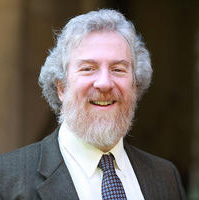Psalm 30: Dedication of the “Inner Temple”

Psalm 30 has the enigmatic introduction, “A Psalm of David for hannukat habayit—the dedication of the Temple”; enigmatic because David never built or saw the Temple. It was his dream, but a dream unrealized in his lifetime and brought to reality by his son, Solomon. So we wonder how it came to be that we have a song (psalm) ascribed to David for an occasion he could not have seen, and we also wonder why this psalm became a part of traditional Jewish liturgy, always recited at the end of the preliminary blessings, followed by the mourners’ kaddish (see, for example, the Rabbinical Assembly’s Siddur Sim Shalom, page 14).
The insertion of the psalm is a “late” development in the history of Jewish liturgy, not to be placed earlier than the 17th century. We find a very reasonable tradition in Sephardic liturgy that includes this psalm only on Hanukkah—an obvious occasion upon which to recite a text about dedication (Hannukat Habayit) of the Temple. Yet, slowly, the psalm evolved from “Hanukkah only” to being included each day, and we have no record of who championed this text or why. It is interesting that it is found at the end of the Birkhot Hashahar (preliminary blessings), rather than within the traditional collection of psalms that follows immediately after the kaddish.
I offer two approaches—each approach offering not only a solution to an interesting historical riddle, but also a spiritual insight into the unfolding structure and message of the texts of our liturgy. In weeks to come we will look a little more at questions “beyond the text,” in the metaphor of Professor Lawrence Hoffman.
First, it is important to note that this psalm immediately follows a lengthy series of rabbinic texts that describe the daily sacrificial rites (e.g., the Koren Sacks Siddur, pages 42–55). Siddur Sim Shalom replaces the topic of sacrifices with texts addressing peace and justice (pages 9–12). The inner message of our psalm is far removed from either the fixed ritual of sacrifices or even analytic reflection on core Jewish values. The psalmist recalls moments of terror or defeat, thanking God for the gift of life, snatched literally from the grave (verse 4). The experience of fear and weeping at night is shared by all humanity and verse 5 celebrates: “Tears may linger during the night, but joy is found at dawn.” The psalm takes the praying Jew from the formality of study to the reality of the joy that can be found in the presence of God. The juxtaposition of classic study with Psalm 30 invites us to find balance between study and praise, between mind and soul.
A second approach suggests that the psalm is not about the dedication of any earthly structure, but that each individual might be seen as a bayit (vessel) that can, if we so choose, be dedicated to the service of God. Psalm 30 is then a challenge addressed to each of us, each day: are we dedicating ourselves, our words, our thoughts—even our doubts and fears—to becoming an “inner temple” dedicated to the Divine?



